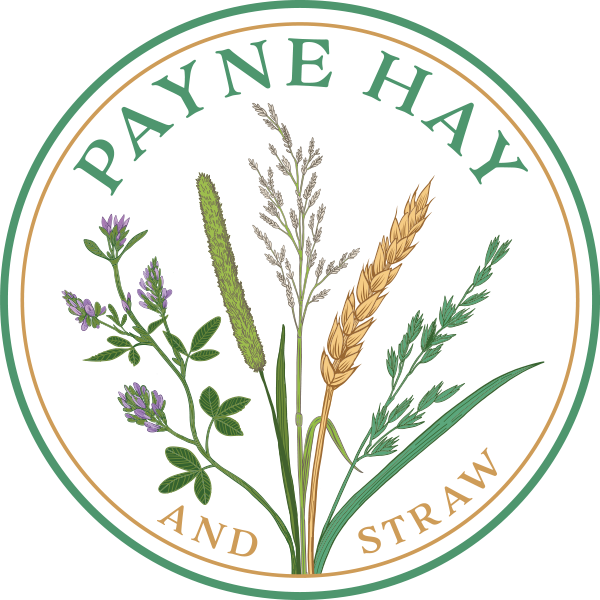Virginia Local Hay
Proper nutrition is key to the health, longevity, and performance of your livestock.
One of the most important factors in determining the quality of hay is the maturity of which the plant is cut. Early in the life cycle of a plant, it will produce hay with a higher nutritional value than a more mature plant. We have invested in modern efficient farm equipment to take advantage of every opportunity to produce the best possible hay with constraints of the weather.
Proper nutrition is key to the health, longevity, and performance of your livestock. Here at Payne Hay and Straw, we are passionate about providing quality nutritious hay. We understand that many animals have special needs and will help in any way to assist our customers in choosing the hay that is best suited for their animal.
Interested in the nutritional value of our different varieties of hay? Ask to see our hay analysis.
Timothy Hay
Timothy is excellent grass hay that is high in fiber and energy content. Ideal for horses, this hay is also a favorite in the dairy community. Timothy often tests low in carbohydrates and starches and when it does it is desirable among our customers with this special need. Timothy is commonly used for obese, colic prone, and protein-sensitive horses.
Timothy hay is the most digestible of all hays and is one of the most popular hay feeds for horses. The hay is a late-maturing high fiber bunchgrass with relatively low protein content. Horse owners have found that Timothy hay promotes a shiny coat, good digestion, bowel regularity, and a healthy weight. It is also excellent for colic prone, protein-sensitive, and obese horses. Timothy hay is highly recommended for horses confined to a stable because it offers more chewing time. It most closely mimics the normal day-long grazing activity for pasture animals, which is anywhere from 10-15 hours a day. Feeding on Timothy hay can help satisfy your horse’s natural urge to chew and graze when they are confined to stalls for long periods of time.
Alfalfa
Alfalfa, legume hay, is known for being high quality, highly digestible, and a good roughage value. It’s high protein and energy, make it preferred hay.
Historically our analysis of Alfalfa has demonstrated hay that is higher in calcium than grass hay, high in protein, and low in carbohydrates. These nutritional values have been of the most interest to our customers.
Teff Hay
Often compared to Timothy, this soft forage grass is relatively low in non-structural carbohydrates and potentially high in calcium as well as phosphorus. Horse owners have reported a good animal acceptance if their horses usually eat timothy hay.
Fescue Hay
Fescue grass is a cool-season grass that grows extremely well in Virginia. We grow both traditional Fescues (Kentucky 31) and Fescue with a novelty endophyte. Second-cutting Fescue also can be palatable enough for alpacas or older horses. Fescue is not recommended for most pregnant animals, especially horses and alpacas.
Alfalfa and Orchardgrass Mix
The practice of mixing Alfalfa with grass hays has been around for generations. Combining the nutrients of Alfalfa with the palatability and digestibility of Orchardgrass makes great hay. A great mix for horse owners who need to provide their animals with a higher level of nutritional value from their hay than straight grass hay.
Timothy and Orchardgrass Mix
Grass mixes such as Orchardgrass and Timothy are popular with consumers whose animals have special dietary needs. Both kinds of grass are high in fiber and great palatability.
Grass Mix
This mix combines several different kinds of grass, making it a good option for most herbivorous animals. It is usually our most economical hay. Grass mix round bales are a great value. Most of our customers prefer to feed a grass mix in a round bale.




